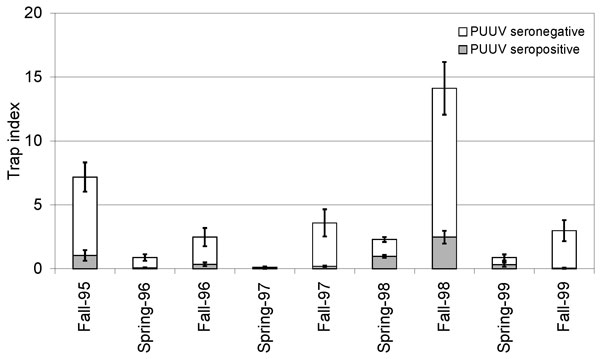Volume 8, Number 9—September 2002
Research
Demographic Factors Associated with Hantavirus Infection in Bank Voles (Clethrionomys glareolus)
Figure 1

Figure 1. Mean (± SE) trap indices of bank voles in all six sites during a 5-year sampling period in northern Sweden. Trap indices represent success in sampling effort as numbers of voles captured per 100 trap nights. Lower, shaded part of the bars represents trap indices of Puumula virus (PUUV)-seropositive bank voles, and the upper part represents PUUV-seronegative voles at each sampling occasion.
Page created: July 16, 2010
Page updated: July 16, 2010
Page reviewed: July 16, 2010
The conclusions, findings, and opinions expressed by authors contributing to this journal do not necessarily reflect the official position of the U.S. Department of Health and Human Services, the Public Health Service, the Centers for Disease Control and Prevention, or the authors' affiliated institutions. Use of trade names is for identification only and does not imply endorsement by any of the groups named above.